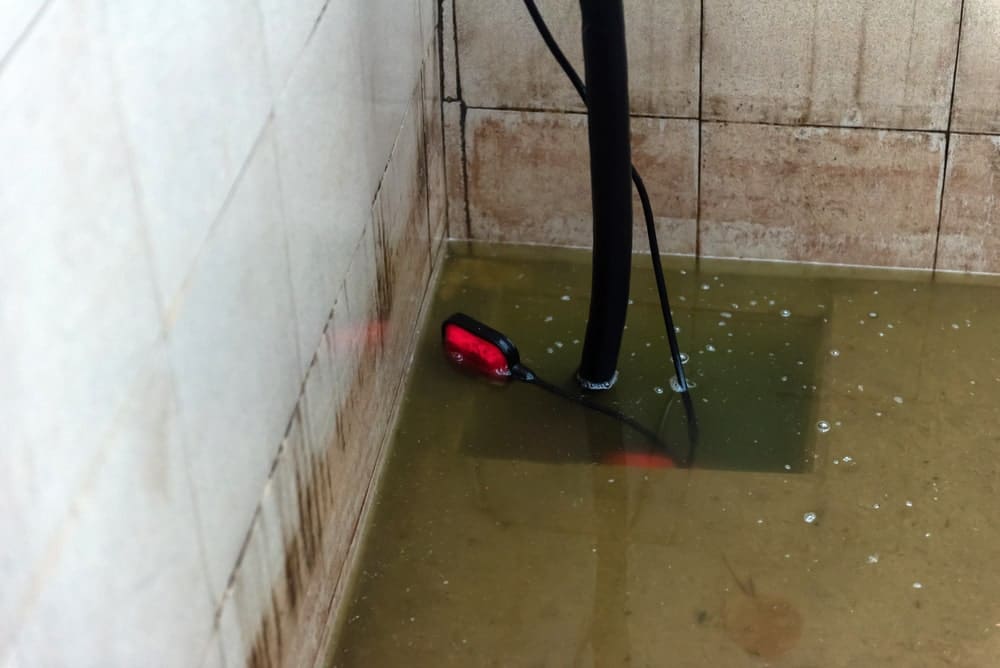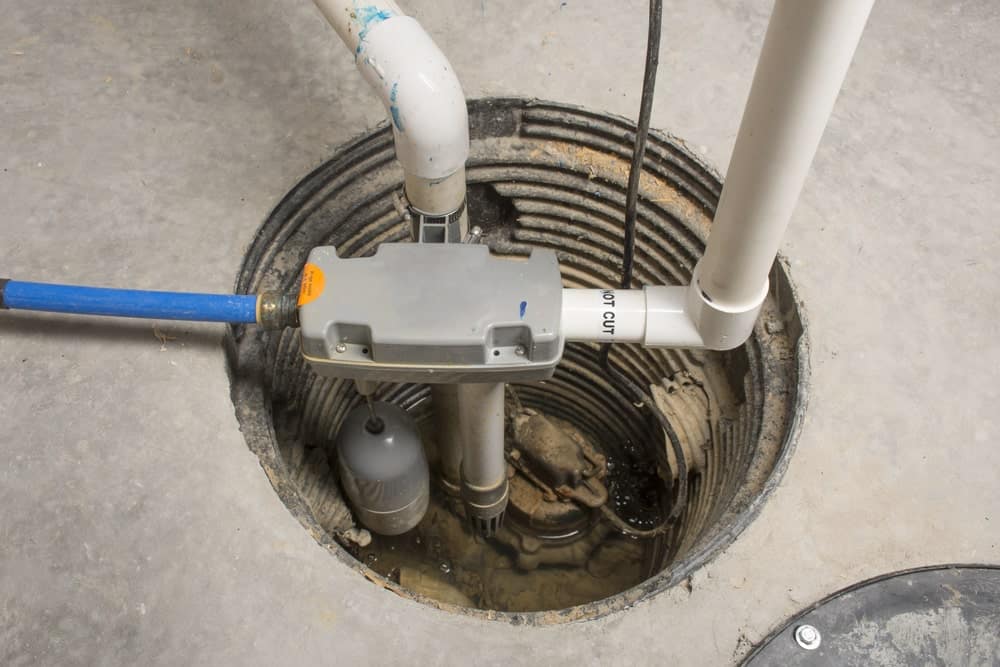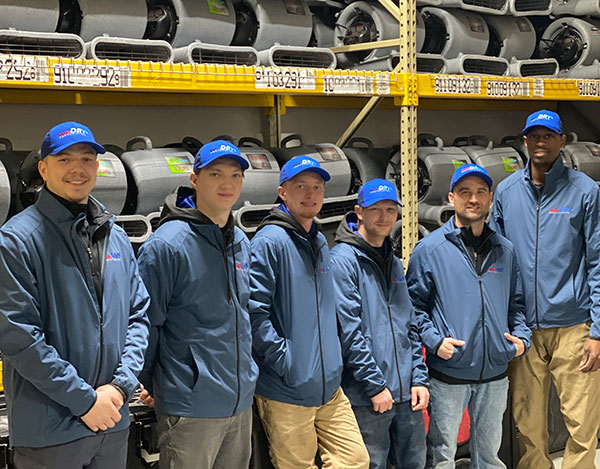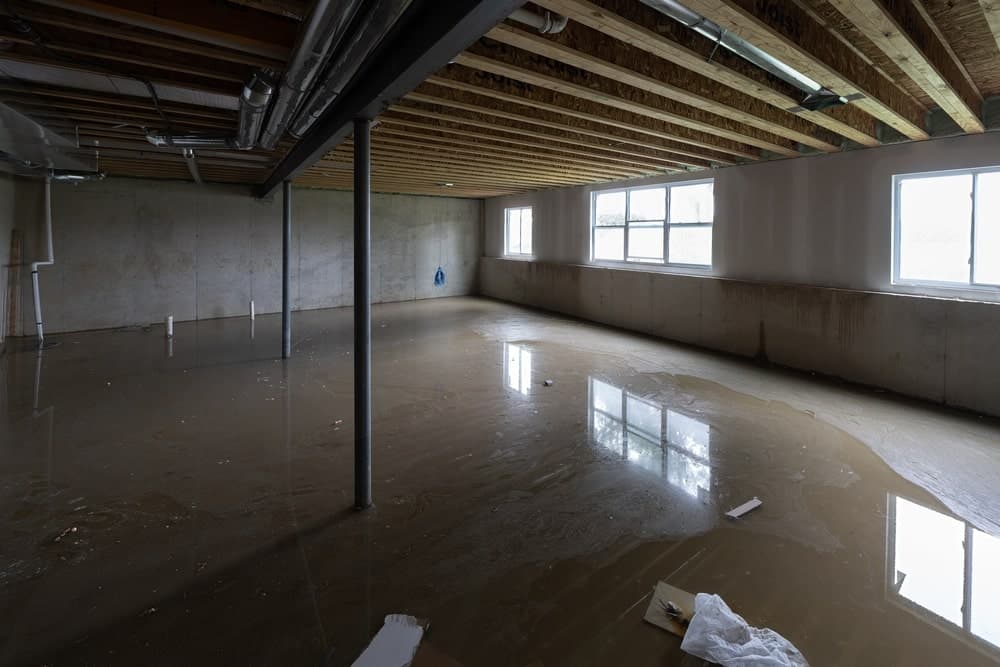Contents
The sump pump in your home is responsible for keeping water out of your home during heavy rainfall and flooding. Making sure your sump pump is in good working order is a key component of keeping your home in a stable shape. So, what happens if the sump pump fails? If your sump pump were to stop working during a storm, there are necessary steps to follow.
What Happens When a Sump Pump Fails?

If your sump pump were to fail, it wouldn’t be able to remove water from your basement. If this happens, water will start to accumulate in the sump pump crock & overflow into the home. Homeowners will then have a huge risk of flooding, water damage and potential mold growth. This is a stressful uphill battle for any homeowner to handle. But, how does a sump pump work to begin with?
How Does a Sump Pump Work?
A submersible device is placed into a sump pit, usually located in your basement. Most of the sump pump’s working life is spent on standby, but when the sump pit begins to fill with water, the sump pump will click on.

The sump pump pumps water from the pit into a discharge line. Water will channel to a nearby storm drain, well, or pond, preventing water from flooding your home.
What to Do if Your Sump Pump Stops Working During a Storm?
Flooding becomes a concern when a bad storm rolls through. If your sump pump stops working during a storm for whatever reason, there are steps you can take to restore power and negate any worries of flooding.
1. Check the Sump Pump
The first step for homeowners to take in this situation is to locate where the sump pump is in the house. Then visually inspect the sump pump and pit and remove any debris that may be causing issues. Also, try determining if the float switch is stuck. If it is, dislodge it from the side of the sump pump.
2. Turn Off the Power
If water has already settled in your basement and the sump pump isn’t working, turn off the power, if it is safe to do so. Never enter standing water while the power is on. Turning off the power will put a safe measure in place to make sure the sump pump doesn’t burn out. This will also help prevent the risk of electrical shock if water were to rise to the height of your electrical outlets. If your sump pump has a battery backup, it can still operate with lost power.
3. Contact a Professional for Water Removal
Once the storm or flooding hazard in your area has passed, contacting a licensed plumbing professional in the area is highly recommended. The technician will inspect your sump pump unit and identify any needs for repairs or service. The second and equally important call to make is to local professionals who will be able to help remove any residual or standing water that may have flooded your home.

For homeowners in Oakland County, Michigan, weDRY Restoration is the leading provider dedicated to water and mold removal in commercial and residential properties.
4. Test the Float Switch
The float switch is one of the key components of your sump pump. Why? The float switch activates your sump pump system when water reaches a certain level. If the float switch were to get lodged or jammed, it could prevent the sump pump from turning on, especially during a storm.
Check for any debris that may be obstructing the float switch then move the float switch up and down to see if it triggers the sump pump system to turn back on.
5. Move Valuables
Safety is always a priority. Once you’ve made sure your family is safe, move any valuable items or furniture that may be affected by water damage. Moving items to a higher location is the best way to prevent any further water damage issues.
6. Contact Your Insurance
The next step that should be taken is contacting your insurance provider. Check with your home insurance if your policy covers any losses due to sump pump failure. If your insurance does cover sump pump failure or back-up coverage , file a claim with them and make sure to pass this information off to your water removal professionals to keep the cleanup process moving forward in a seamless manner.
Why Does a Sump Pump Fail?

The sump pump in your home can fail due to a variety of reasons. Some of the most common causes of sump pump failures include:
- Power outage. Most sump pumps rely on electricity, so if the power goes out, the sump pump can fail. Power may be cut during storms or when animals, trees, and construction equipment mess with power lines and poles.
- Stuck switch. A stuck switch is a common cause of sump pump failure. This will cause the sump pump to constantly run or not run at all. If the switch needs to be replaced (this can happen around every two years) switches are relatively inexpensive.
- Motor burnout. Motor failure happens when the electricity demand is too high for the motor, causing the pump to overheat and shut off. This can also stem from a poor-quality sump pump or an undersized pump. When undersized, the motor can’t keep up with the water levels rising, leading to burnout.
- Clogged discharge piping. If your discharging lines contain cracks, breaks, or clogs, it will cause the sump pump to work harder. It is recommended to check these pumps a couple of times during the year when dumping water into the sump pump. Also, try cleaning out any dirt and debris from the sump pit that could clog discharge lines.
- Old age. Like many other components in your house, the sump pump will age. Most sump pumps have a lifespan ranging from 5-10 years depending on the usage.
How weDRY Restoration Can Help If Your Sump Pump Fails
If your Oakland County, MI, home runs into flooding issues and damage due to sump pump failure, contact the team at weDRY to help find the best solution for your basement with 24/7 services.



